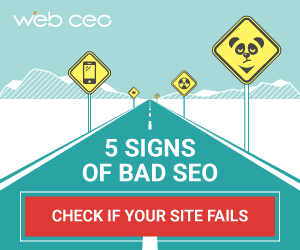Software-as-a-Service (SaaS) companies have emerged as powerful players, providing innovative solutions to businesses worldwide. To determine the success of these companies, considering certain metrics like Annual Recurring Revenue (ARR), Annual Contract Value (ACV), and Total Contract Value (TCV) is important. Such metrics offer valuable insights into a company’s financial health, growth potential, and the level of customer satisfaction.
What is ARR?
Annual Recurring Revenue (ARR) refers to the total annual revenue a SaaS company expects to receive from its customers based on their recurring subscriptions or contracts. In other words, it’s the total projected revenue of one year.
The phrase “recurring” is used to describe recurring payments on an annual basis. ARR is calculated as:
ARR = (one-year subscription revenue of all customers + recurring revenue from upgrades and add-ons) – (churned revenue during the same period)
One time fees such as installation charges, consultation service charges as well as discounts and price adjustments are not included in ARR. The same formula can also be used to calculate on monthly or quarterly basis.
Why ARR Matters for SaaS Companies?
SaaS (Software as a Service) providers are need to monitor and track their progress. ARR is one of the metrics widely used to gauge financial performance. The following are a few reasons why ARR matters SaaS companies.
- ARR helps in prediction of revenue stream over a 12-month period. By focusing on recurring revenue from subscriptions or contracts, companies gain revenue visibility and predictability. This data can be used to make strategic decisions and forecast future revenues. For example, if the SaaS company has to invest in a newer technology, it would find ARR as a useful metric to determine whether they will be able to finance the R&D for the new tech or not.
- ARR provides insights into customer retention and satisfaction levels. A high ARR indicates that customers are renewing their subscriptions or contracts, indicating their ongoing satisfaction with the product or service and vice versa. Therefore, by monitoring changes in ARR and identifying any decline, SaaS companies can proactively address customer concerns, determine the flaws, and improve the customer experience for long term customer retention. A high retention rate suggests that the firm is effectively maintaining its consumers and is providing good customer service, which will lead to a constant stream of recurring income. Conversely, a poor retention rate suggests that the organization is losing clients, which would adversely affect ARR.
- ARR is helpful in forecasting future expansion. By monitoring ARR, SaaS companies can observe how their revenue is trending over time, which can aid in detection of patterns and formulation of growth-promoting strategies.
- By monitoring ARR, SaaS companies can identify the long-term effects of customer acquisition and retention strategies on revenue growth.
- Another important reason why ARR matters is because of favorability from investors. Since it highlights the company’s ability to generate consistent revenue, it is a key sign investors look for. Investors look for companies with high ARR as it increases their confidence in the company’s financial viability.
SaaS Companies must pay close attention to ARR since it reveals information about the sustainability and expansion of a business over time. SaaS companies can boost their ARR and profitability by concentrating on expanding their subscriber base, improving their average revenue per user, and retaining existing clients.

What is ACV?
An Annual Contract Value (ACV) is the monetary worth of a single customer’s contract or subscription for a single year. It is another key indicator that helps gauge financial performance of Software as a Service (SaaS) companies.
ACV is calculated by dividing the total value of a customer’s contract by the contract duration in years.
ACV = total contract value of a customer / number of years
This metric is crucial as it enables businesses to evaluate customer relationships, forecast revenue, identify up-selling opportunities, evaluate pricing strategies, and provide valuable information for strategic decision-making.
Why ACV Matters for SaaS Companies?
Using ACV, rapidly expanding SaaS organizations can anticipate and manage their future growth by estimating the amount of recurring income they can expect from new clients. Some examples of how this measure is used by SaaS companies are as follows:
- With the help of ACV, A SaaS company is able to figure out high-value customers and understand the revenue impact of each customer. This data can be used to allocate resources effectively and prioritize customer engagement strategies.
- ACV aids in strategic planning and prioritization by revealing localized possibilities for upselling, customer retention, and other strategies that decrease churn and increase CLTV (Customer Lifetime Value). It also helps smaller groups and new businesses maximize their efficiency. This information empowers sales and account management teams to target the right customers with the right offerings, leading to increased customer value and revenue growth.
- Just like ARR, ACV also helps in attracting investors. Investors are able to foresee the company’s ability to attract and retain high-value customers. SaaS companies with higher ACV often garner more investor interest as it signifies a strong customer base, revenue predictability, and potential for future growth.
What is a Standard ACV for SaaS?
Since there is such a broad range of subscription models, pricing structures, B2C vs B2B sales, and so on, much of the available data on what constitutes a “good” or “bad” ACV is, at best, speculative.
SaaS ACV is just one measure that contributes to a company’s overall financial health, thus it should not be judged positively or negatively in isolation. A recent analysis indicates that there is a discrepancy between B2C and B2B pricing models. According to their findings, B2C customers have an average ACV of $100, whereas B2B customers have an ACV of $1,080, or more than 10 times as much.

What is TCV?
The term “Total Contract Value (TCV)” is used to describe the sum of money to be made from a contract during its duration, which can be short or long. In addition to recurring revenues, TCV also takes into account one-time fees such as installation and consultation fees. The objective of TCV is to calculate the total revenue to be made from a customer over the entire length of the contract.
TCV = (MRR x Contract Term Length in months) + one-time fees
TCV is calculated based on MRR (Monthly Recurring Revenue, which is another important metric to consider that we have covered separately in a dedicated post.
The TCV is an important business indicator since it accounts for both recurring income and one-time payments like onboarding, professional services, etc. that are earned from a client contract. This statistic is especially useful for SaaS businesses since it allows them to track and analyze the money generated by individual contracts, as well as anticipate the revenue that future contracts will bring in.
Why TCV Matters for SaaS Companies?
The success of the SaaS or subscription business depends on the ability to accurately estimate the value of the contracts. Here are four reasons why TCV is a more is an important indicator of growth.
- Using TCV simplifies the math required to provide reliable projections of future revenue. Accurate forecasts have the added benefit of attracting investors.
- TCV helps a SaaS business see which of its client groups have the highest lifetime value, allowing the business to focus on retaining high-value customers.
- TCV analysis assists in identifying contract renewal and expansion opportunities. By understanding the total value of a customer’s contract, SaaS companies can proactively engage with customers to renew contracts or explore possibilities for contract expansion or upselling. This helps drive additional revenue streams and strengthens customer relationships.
- Various client categories respond favorably or negatively to varying contract durations. SaaS companies can increase their average TCV by tailoring their sales strategies toward longer-term contracts after they have determined which package durations work best for certain customer groups.
- Calculating the efficacy of marketing efforts by dividing TCV bookings by customer acquisition cost reveals which channels should be prioritized for expansion and which should be scaled down. By considering the TCV, businesses can evaluate the profitability of acquiring and retaining customers, and make strategic decisions regarding resource allocation and customer retention initiatives.

Conclusion
ARR, ACV, and TCV are all important factors for modern-day SaaS companies to grow and expand their business. The right analysis of these metrics helps in increasing Customer Lifetime Value. ARR provides visibility into the company’s recurring revenue stream, offering stability and predictability. ACV helps understand customer value, aids in revenue forecasting, identifies upselling opportunities, and influences pricing strategies. TCV provides insights into the long-term revenue potential of customer, guides resource allocation, and assists in identifying renewal and expansion opportunities.






![what-are-isvs?-[examples,-benefits,-and-more]](https://seonewsmedia.com/wp-content/uploads/2023/06/20530-what-are-isvs-examples-benefits-and-more-150x150.png-23keepprotocol)
![how-many-visitors-should-your-website-get?-[data-from-400+-web-traffic-analysts]](https://seonewsmedia.com/wp-content/uploads/2023/06/20536-how-many-visitors-should-your-website-get-data-from-400-web-traffic-analysts-150x150.png-23keepprotocol)